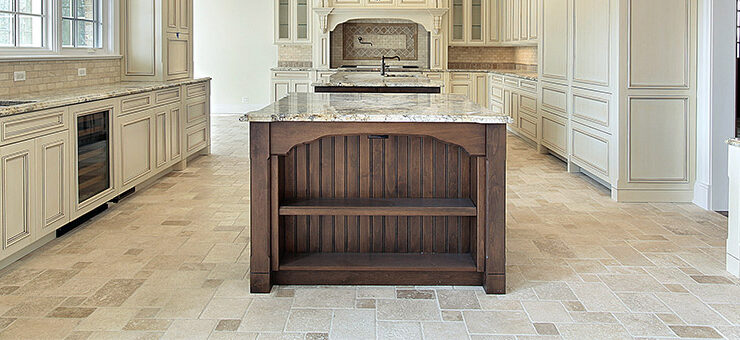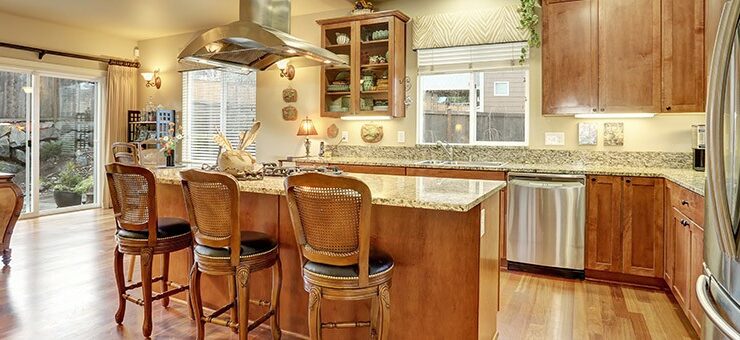The backsplash for your kitchen remodel can make or break the project. Install a material that doesn’t mesh with the flooring, cabinets and counters in the space or work with a poor color choice and you’ll regret the investment.
On the other hand, finding inspirational ideas and carefully selecting materials will result in a backsplash that makes a statement and unifies the kitchen.
Here’s how to approach a kitchen backsplash project with confidence:
- Step 1: Consider the design. Work with your countertop to choose the best backsplash design. Granite and quartz are just two of the more popular counter choices that bring a high-end finish to the space. You’ll want to choose a backsplash material, pattern, color and texture that brings out the best in the countertop, as well as the room’s cabinetry and flooring.
- Step 2: Establish the scope. Not all backsplashes are the same – in size, that is. Consider the scope of the project first, determining how much backsplash is necessary to complement the counter and the room in general. Will the backsplash be just a few inches tall, essentially acting as a moisture guard? Will it rise to the upper cabinets? Is there a place in the kitchen where a counter to ceiling backsplash will really make a statement? Once you know the surface area to cover, you can measure and calculate how much material to purchase.
- Step 3: Choose the material. Now that you have an amount to work with, you can choose the backsplash material for the project. This selection will be in part based on your budget, too. Survey many options, such as glass, stainless steel or tile and try some samples on for size. Ceramic tile is generally the cheapest option, while higher-end options like stone will require a sizeable investment. Also consider the texture of the tile, which can either enhance the room’s design or detract from it.
- Step 4: Find a supplier and installer. You’ll want to work with an experienced supplier when sourcing quality tile. The contractor you use will also affect the end result. Poor-quality tile and shoddy installation will result in a bad job. Even a high-quality tile can end up looking cheap if the installation isn’t up to par. Make sure you work with the supplier to source the highest-quality tile and ensure it arrives all at once so you have all of the tile your contractor needs to start the project.
The backsplash is just one key component that can liven up your living space. When you’re considering a kitchen remodel or giving your kitchen a facelift, a new backsplash can make all of the difference. Ensure that the backsplash complements the kitchen’s existing or new design, such as the counter, cabinets, fixtures and flooring. Then, decide upon the scope of the project. A statement piece that spans the wall can be a work of art on its own; however, smaller backsplashes can still have an impact. Consider several types of materials along with texture and pattern. Then, work with a proven supplier and installer to ensure a job well done.
If you have questions about how to tackle this kind of project or you need help working on the design, don’t hesitate to contact your local kitchen remodeling specialist. We’re here to help homeowners get the kitchen of the dreams – and nothing less.




